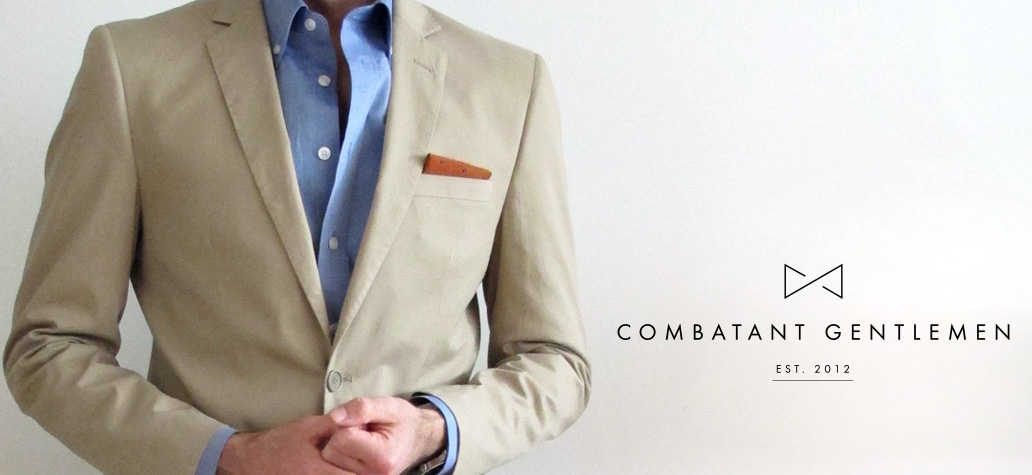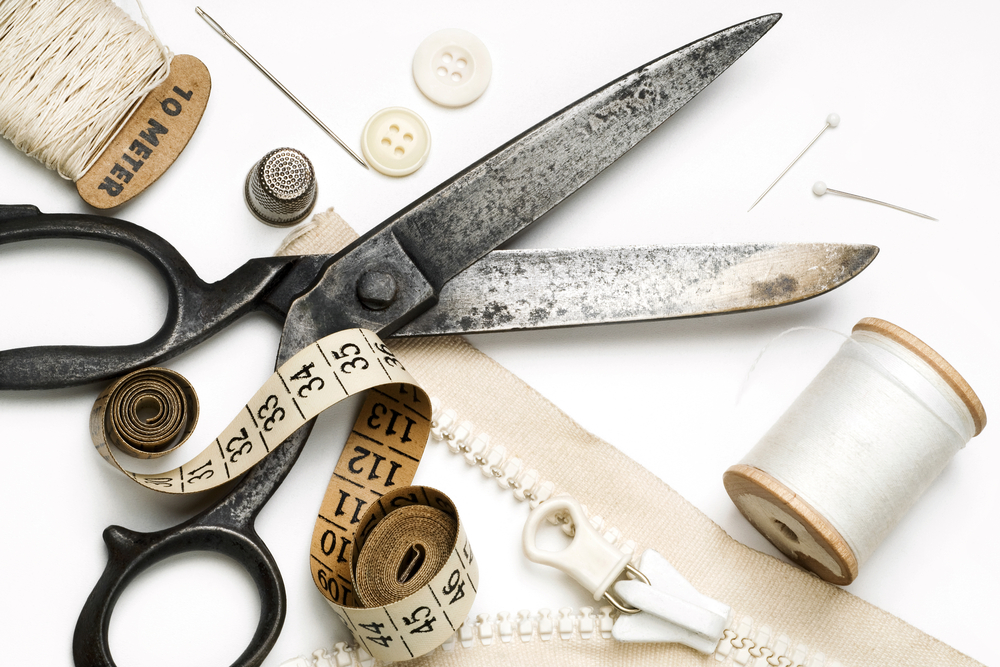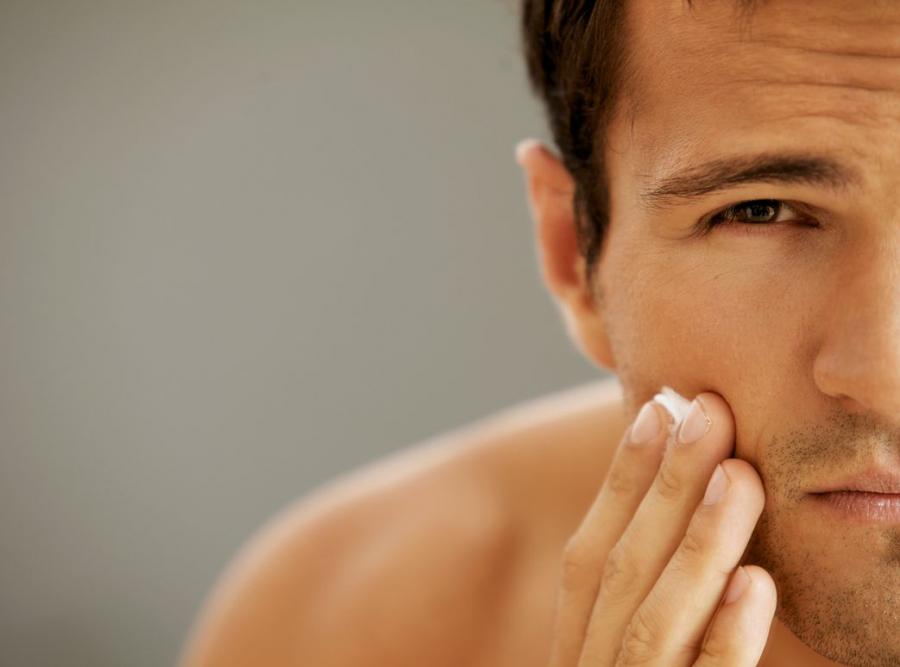No words. Just some inspiration for winter. Most images pulled from Tumblr.
Winter 2015



Let’s get a little disclosure out of the way right off the bat. I work for a company that does custom suits, shirts, etc. – not just as a sales guy, but high enough up the (relatively small) ladder that my input helps shape the direction of the company. Beckett & Robb is technically a competitor to Combatant Gentlemen, although our demographics and approaches are so different there is very little overlap.
The above said, I do not believe that B&R is the only option for a quality suit available. In fact, at a starting point of $695 for a two-piece suit, it can be a tough sale for men on a strict budget. This is where the value of a company like Combat Gent comes in.
I was first introduced to Combat Gent at StyleCon last year. I’d heard of them before, but was able to meet a representative from the company in LA. Great guy with a laid-back approach. We swapped information and a few months later I got a call from their director of marketing wanting to know if I was interested in checking them out.
I always love trying out new stuff, but I knew I wouldn’t wear one of their suits personally. I don’t have a situation in which I can because 95% of my time suited up is spent at or representing Beckett & Robb. However, I have a brother in law who was looking for some new gear for a round of job interviews and asked if they were interested in sending some stuff his way. Here’s Greg in what he used to wear.
He’s a bigger dude, so fit is pretty tough to nail. That said, this off-the-rack option was looking bad. The style was outdated (hard three-button stance, lower lapel gorge, extra-long jacket and pant rise) and the fit was actually too big in the wrong places (hem too long, massive shoulders, chest, thighs, and sleeves). Greg has owned this suit for years and it’s seen a lot of mileage.
Combat Gent sent over their Modern Fit Charcoal Birdseye, a couple of shirts, and even a couple of pairs of ties.
Before I show the after, I want to dive in a little bit to why the value of this suit is as good as it is. One of the primary reasons suiting is and can be so expensive is because of how many different people and steps are involved. An average example would look like this.
Clothing Mill –> Distributor–> Manufacturing Facility–> Distributor–> Brand–> Retailer–> Customer
Other than the customer at the very end, every single one of these groups needs to make money off of their product or service. So a $200 suit bought at most of the large chains actually costs about $20 to make. As can be imagined, the quality of the cloth and construction in a $20 suit leaves a lot to be desired. This is where wool blends, often 98% polyester 2% wool, come into the arena.
With most suiting this cheap, the fit requirements are that of the lowest common denominator. Low armholes will fit every man and look good on none. Same goes for bulky, baggy sleeves and large seats. Add all of this to extra wide, extra padded shoulders, and the end result is what Greg is wearing above.
What Combat Gent sent Greg is also a suit that costs $200. However, his suit is made of 100% Italian Super 140’s wool. And, while it’s not custom, his measurements were used extensively in order to get (almost) the best fit available.
Combat Gent is able to do this because they own every step of the production chain. They are a design-to-delivery brand who even owns the flocks of sheep from which the wool comes. So all of those other people above making money off of a suit, and the brand making the high markup in order to generate a livable profit? Combat Gent can skip all of that, make a comfortable profit on their products, and still offer them at prices that aren’t even seen in many department stores.
It’s a cool concept and one that is only possible with the advent of the Internet and online sales.
Before sending over the goods, they asked for about a dozen measurements from Greg. As I mentioned above, these suits are not custom, but those measurements are factored in. Here’s what the finished product looks like.
This is a huge improvement over what he was wearing before. The jacket length is perfect and, paired with the higher rise on the pants, evens out the proportions between his legs and his torso – making him look taller and slimmer. The shoulders end closer to where they should, the seat and thighs fit much closer to where Greg’s natural lines are, and the deeper V of the two-button stance helps make his shoulders appear broader.
There were a few things needed some work. First, and Combat Gent makes customers aware of this all throughout the site, the pants come unfinished at the hem at a standard 36″ length. This means the suit will automatically need to be tailored to get the hem completed. While some newbies in the industry may be frustrated by the fact that it’s not ready-to-go out of the box, this is both a standard practice and an advantage. Having done hundreds of fittings, I can say that one of the most difficult things to dial in without an actual garment on a client, is the length of the pants. Rather than taking their best guess, they allow the customer and his tailor to determined the proper length and get it right the first time. For us to get Greg’s altered, it was about $20, so add that to the total of the suit. Looking at the picture, I’d tell him to bring that hem up another inch or so (or wear his pants where he’s supposed to) to get the break just right.
As you’ll notice in the picture, the length of the sleeves is too long as well. Because the buttons are non-functioning, this is another area that can be altered, but it would have been better had they come in a little shorter. Unlike custom companies who take a higher margin and advertise a near-perfect fit, Combat Gent does not offer reimbursement for tailoring services. This is another standard procedure for ready-to-wear suits, and another advantage to choosing to go custom if possible.
I was at Greg’s place the first time he tried it on, and it was fun to see the effect it had on him. As can be imagined, I get my fair share of grief from my in-laws about what I do for a living and what I am wearing when I come over. It’s all done in love and good fun, but it’s great for me to see men in my own life become a little more converted to the advantages of dressing better and more intentionally. He and his wife recently went on a cruise and he took the suit with him to wear for the formal dinner. When he got home he told me a couple of different times how cool it felt to have people throughout the dining hall eyeing him up and down and appreciating the cut of his suit. For a big guy like Greg, it’s a huge difference.
In the end, this is a product I’ll recommend, but only to those who can’t make the jump to go full custom. As those prices continue to rise though (most online companies are now starting above $400), Combat Gent becomes more and more appealing to men on a tight budget. The value of the cloth is unbeatable at this price point and, the fit is about as good as it gets for off-the-rack.
They do some great casual wear as well, so I might have to see how their chinos, OCBD’s, and other items wear and fit too. Either way, check them out.

Big news! The podcast is now available on iTunes. Please leave a rating and/or review if you like this episode.
In episode two I revisit the post A Stylish Man and discuss the mindset necessary to create a sense of style. Striking the balance between apathy and over-concern is key.
As part of each episode, I discuss an Icon and Embarrassment. They are examples who typify both the good and the bad of the topic being discussed.
Icon: Barron Cuadro of Effortless Gent.
Embarrassment: Neckbeards

For men who spend any time browsing style blogs and forums, this is almost a throw away statement. Every author and his dog has told his readers that a key to dialing in his style is establishing a relationship with the right tailor.
But what does that mean exactly? I know I’ve used a total of four different tailors in the last decade. While all of them were similarly competent in their skill levels, there’s a reason I’m currently using the one I am.
The ability to tailor should be a default, not a bonus. Unless the tailor a man uses has only been open for six months or has an eerily quiet shop, it’s safe to assume he knows what he’s doing. This is not a plus, it’s an expectation. I have yet to visit an incapable tailor, so don’t get too excited about the prospect that he’s capable.
With that out of the way, there are three key things to look for when establishing a relationship with a great tailor. His fairness, his taste, and his willingness to meet your expectations.
Fairness should be obvious. It doesn’t matter how well he does, if it’s $200 to bring the sleeves up on a jacket, he’s overcharging. Ideally, a man’s tailor should be willing to address each need of a garment, break it down by its effect and priority, and then give a corresponding price breakdown.
This morning I met with a man who had a jacket that was too long in the body, too wide and too long through the sleeves, too big in the chest, too large in the shoulders, too large in the waist, and too big through the back. All in all, it was huge on him. Unfortunately he needs it for a business trip in a week, so going the custom route isn’t going to work and he’s had the suit for a decade, so a return isn’t an option. I sent him to my tailor with the understanding that she would prioritize each item for him according to its effect. For example:
Shorten the jacket
Bring in the shoulders
Shorten the sleeves
Decrease sleeve circumference
Decrease circumference through waist
Decrease circumference through chest
Decrease circumference through seat
Bring in back.
Her order might not be the same as mine, but it will be similar. Secondly, she’ll tell him that shortening the jacket is impossible to do and bringing int he shoulders will most likely cost him as much as it did to purchase the jacket. If he wants to pay for that, he can and can now do so with the full knowledge of both its price and importance. From there, she’ll break it down and let him decide if he wants to pay for any or all of the alterable details.
Taste is another huge aspect. When it comes to clothing – and certainly to menswear – there are very few things that are objectively bad. Finding a tailor who sees clothing with a variable lens makes the communication process much simpler.
This doesn’t mean it’s necessary to find a tailor who dresses exactly as one wishes. However, it is key to find who is capable of understanding the desired goals and what steps are necessary in order to accomplish them.
In my opinion his willingness to meet his clients’ expectations is the biggest differentiator between an ok tailor and a great one. The last thing a man needs is a tailor who will argue with, talk down to, or belittle his expectations.
I remember going in to buy my first real suit more than 10 years ago and wanting something with a higher rise. This was 2003, long before slimmer suits had started to gather steam and I was wanting something that fit more like my jeans than what I’d been wearing to church each week for years. While I was out shopping, each sales person and in-house tailor told me it was impossible to find and/or alter a pair of suit pants to fit the way I wanted to and, if I wanted a rise that didn’t sink to my knees, then I needed to wear my suits up at my navel.
I look back now and don’t see an objective impossibility as much as an unwillingness to push themselves out of their comfort zones or their expectations of what good style is.
My current tailor doesn’t just tell me what I want to hear; she helps me see the ramifications, difficulties, or expenses in making changes. But, at the end of the day, if it’s possible and I’m willing to pay for it, she’ll do whatever I want to get the job done.
A tailor should be an advisor, not a competitor.

This post is sponsored by Luxury Barber. For more info, visit luxurybarber.com
Hello everyone! Thank you for all the kind words on the first article. I wasn’t quite sure how well it’d be received, but it was all good vibes. I’m excited to share my knowledge with such an enthused audience.
Well where to start? It’s a little daunting, as there is much to cover, but I’ll break it down into 3 topics (and then sub-topics as necessary) and cover them each in an article to keep it from being overwhelming. As always, everything in these articles comes from my own personal experiences, and those of my clients who’ve shared them with me, so take it with a grain of salt and apply it to your own life as you see fit.
SKIN CARE: A fitting place to start, considering it is the largest organ of the human body. As a barber, everything below the shoulders isn’t my territory so I’ll only be covering the face & neck.
HAIRCARE: Now we’re talking! I know some of you are covered in hair like wookies (present company included) but I’ll limit it to Scalp Hair and Beard/Moustache Hair.
BODYCARE: This area isn’t terribly important to barbering, but clients often times need a little direction so I help out where I can. I’ll be covering this bit last.
After all of that, I’ll be writing pieces that don’t really have a place, or giving reviews of new and old products that I come across. It’ll be real easy going. Let’s get started shall we?
Skin care is something men overlook once we’ve passed though puberty, but its 2015 and taking care of your face is more important than ever. From shaving to eye creams, night masks to peels there is much to cover but don’t fret my good chum, it’s nothing you can’t handle.
Routine
Every guy should have one when it comes to skin care, and developing one is a matter of understanding the needs of your skin. There are 5 commonly accepted “types” of skin and identifying where your skin fits in with these archetypes will help you pick out products that complement the unique nature of your skin.
Normal Skin
Come on, you know this. Your skin isn’t too shiny, or flaky, nor overly wrinkly and of an even color all around. Maintenance and preventative care is the goal here.
Dry Skin
Pretty self-explanatory but the basics are that dry skin does not produce enough natural oil (sebum) to maintain healthy levels of skin moisture. This can come from genetics where your DNA has decided to just be crummy in that effect, or it could be as simple a mild to moderate dehydration, where you’re just not drinking enough water a day and your skin suffers the negative effects.
Oily Skin
Excess oil production is the calling card for this skin type. Hair follicles are larger, contain more oil and require more cleansing/exfoliating than other types. The problem though besides the obvious, is that over zealous cleansing can lead to unbalanced over-drying of the skin and the body trying to compensate by increasing oil production. Proper exfoliation, and a good water-based hydrator to maintain the skin’s pH will help keep skin clean and balanced.
Combination
A little country, and a little bit rock, combination skin can be both oily and dry in different areas. Most often a T-zone diagram is used to illustrate the oily areas from the dry ones; though if you aren’t familiar with a T-Zone diagram it’s the forehead, nose and chin areas that have more sebaceous glands and tend to be the oiliest parts whereas the cheeks and outermost parts of the face tend to be dry.
Sensitive
Similar to dry skin, but not without its own challenges, sensitive skin can appear dry and delicate, but can feature blemishes and breakouts. The biggest tell is an allergic reaction to lots of different cosmetic products and it tends to have a overall reddish appearance. Fragrance-free, organic or dermatologist recommended products are the light end then of that tunnel.
The Routine
Cleanse.
Tone.
Moisturize
//
Scrub
Complex.
Mask.
Repeat.
The basics of how to take care of your face in 5 simple words. 3 are must-dailies, and 3 are optional next-level practices. To make this easy, let’s assume you fall under the “Normal skin” category; an all-inclusive routine might look something like this
Cleanse
Wash your face 2x a day. In the morning either during/after your shower, and before bed with a mild face wash designed for men. Not only is men’s skin thicker, but it also tends to be oilier. This extra lubrication is essential for beard growth and helps to counterbalance the ravages of time, protecting the skin and acting as a natural wrinkle-reducer. So you’re gonna have to go out and get your own, no using your girlfriends’ anymore. Use warm water, and be gentle damnit. Scrubbing your face with a loofah or a washcloth like you’re trying to remove graffiti from a building won’t “deep clean your pores”, Excessive scrubbing can wear away the stratum corneum, the outermost skin barrier and can cause excessive dryness and cracks.
Tone
So you’ve washed away last night’s pillow drool (or the day’s long work hours) and your face is feeling fresh, get out a cotton ball and dampen it with an alcohol free toner and apply it lightly on your face paying special attention to your nose, forehead and other trouble spots. Toner’s job is two-fold: its main job is to tighten the skin and help minimize the appearance of pores, and secondary job is to rebalance the skin’s pH after cleansing. It should tingle, not sting like aftershave. Let it air dry.
Moisturize
Almost done! You’re skin is all prepped right now so let’s bring it on home. That secondary job of toner mentioned above, the pH balancing thing? Turns out its pretty important because it doesn’t just “balance your skin’s pH”, it actually preps your face for the glycolic acid (AHA’s) in fine facial moisturizers, since these won’t work on alkaline skin. In short, it aids in the absorption of your moisturizer making it more effective. Rub a nickel sized amount all over your face and neck and let it soak in.
Boo yeah. Now time for your don’t-have-to-but-will-definitely-make-a-big-improvement options:
Scrub
Even a good face wash needs a little help after a while, and a weekly face scrub is the way to go about it. Everyday your body loses about a million+ skin cells and an exfoliating treatment will help to buff away the dead skin and stimulate skin renewal. Use it similarly to a face wash, just no more than once a week.
Complex
More specifically an under-eye complex, these are usually higher concentrated moisturizers designed to combat dark circles and wrinkle that develop in the very sensitive skin under the eye. A couple spots of cream patted into the skin until absorbed should do the trick.
Mask
The quintessential B-roll footage of any spa scene in a movie, a clay mask isn’t all green face putty and cucumber slices. A mask’s job is to draw out deep impurities in the skin using purified clays like Bentonite or Kaolin. This is something you can use once a week, but realistically closer to twice a month as a mask’s ingredients are very potent. Rub a thin layer all over your face and let it set for about 10 minutes before gently removing it with warm water.
Those are the basics. Shouldn’t add more that 5 minutes to your routine (or help you build a routine if you don’t have one) in the morning; Your future self will thank you, because you’ve taken the steps now to protect yourself from harmful sun damage, air pollution, free radicals and more that seek to ruin your good looks. Plus, you’re an adult and taking care of yourself is just one of those things you have to do now; like laundry, paying parking tickets and taking your mother out to lunch once in a while. And above all it’s good for you; A morning routine:
-Supports relaxation & lowers daily stress
-Have a clearer and sharper mind all day
-Get more accomplished throughout the day
-Have more energy throughout the day
-Healthier & happier
-Long-term success & wellbeing
-Allow you to build momentum and grow, day after day.
As always, I’m not a doctor. Go ask somebody with a degree about the specifics before you try a new routine, especially if you have skin issues. Do your research too! Read reviews, ingredients lists, blogs, go to stores and get the people working there to give you demos, bring home samples and try them out for a week.
Do what’s right for you. It’s only for your benefit, and it’s only your responsibility to yourself.
Tanner here. I don’t know about you, but when I first read the draft of John’s post I was a little intimidated. A mask? That’s the kind of stuff that either the overly wealthy or the overly effeminate do. Even this other stuff was more of a routine than I was used to.
However, I realized that it was more of a fear of others opinions or the dedication of trying this out that made me chaff a bit at the idea – not the fact that I didn’t believe what John was saying. The largest barrier to my getting into a better skin care routine was the risk of buying and trying out the right products.
That’s where Luxury Barber comes in.
The timing on this was a perfect coincidence as they contacted me and wanted to send me one of their boxes. In it was everything I needed (except the mask – I’ll get there one day). In each box they send out pre-shave, razor blades, skin/face care, shampoo and conditioner, and a featured item that may be something like a straight razor. They’re always different brands, meaning each month it’s possible to try out a new product until you find the perfect one. From there, all of these items are available for purchase on their site, and box subscribers get 10% – 20% off. Pretty sweet deal and a great way to start taking better care of your face.